Rad Power Bikes has been in the e-bike game long enough to know what city riders really need: a mix of simplicity, utility, and the right amount of boost. Enter the RadKick, a lightweight commuter that’s got all the essentials without the heavy frills, aimed at folks who want to get from point A to point B without wrestling a heavy machine. This one comes in two flavors— a classic 7-speed for those who like having gears to play with, and a belt-drive single-speed for the low-maintenance crowd who just want to hop on and go.
The RadKick isn’t Rad’s typical fat-tire bruiser; it’s more streamlined, nimble, and straightforward, built with city commutes and neighborhood rides in mind. It’s a bike for people who appreciate a little simplicity in their tech but still want the juice to climb some hills and cruise around town at a solid clip. The compact frame and easy step-through design mean it’s versatile enough for a range of riders, and the sub-55lb weight? That’s a win for anyone who’s tired of lugging around a tank.
In this review, I’ll dig into whether the RadKick lives up to the Rad Power reputation, or if it’s just another option on the growing list of budget-friendly commuters.
My Experience Riding The Velotric Discover 1 Plus E-Bike
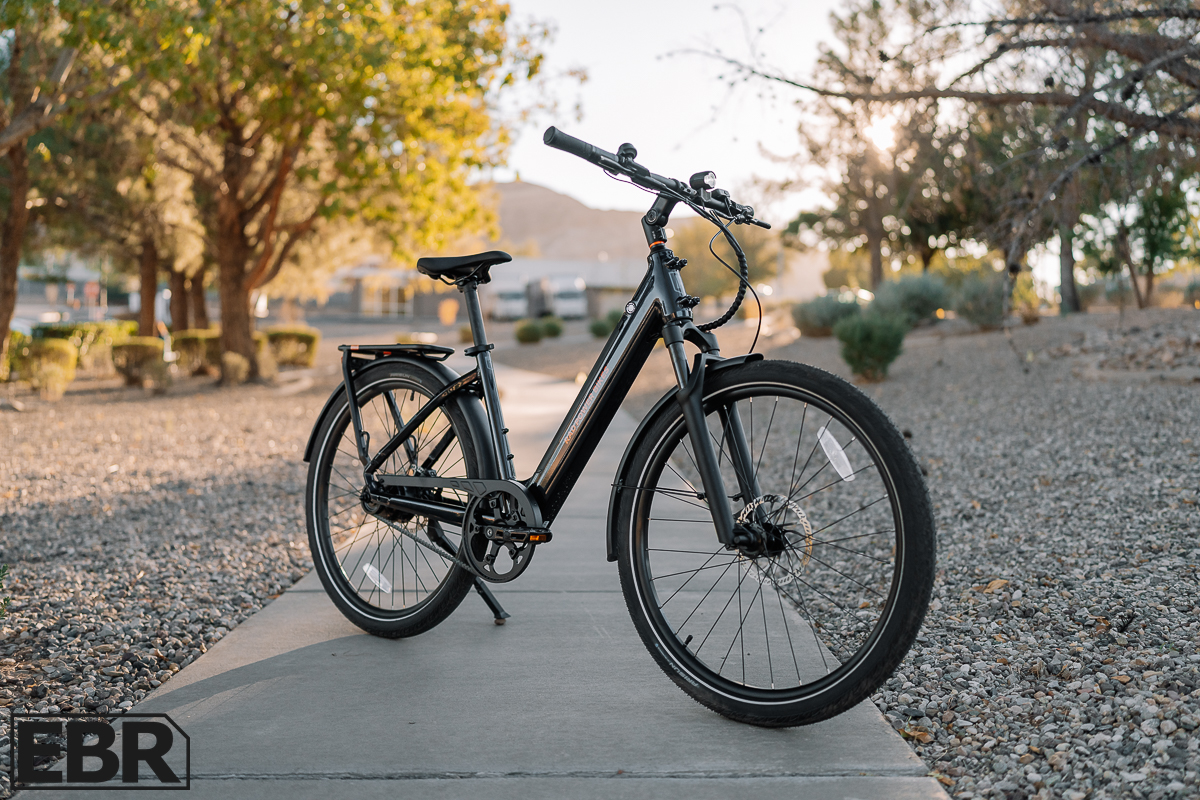
The RadKick has a slick look with its midnight blue paint job—almost black at first glance, but it shifts to a deep blue in the light. The low step-through frame with a 17” standover makes it easy to hop on and off, which is nice for quick stops.
At first, I thought the bike seemed a bit compact, but once I got moving, it felt roomier than it looked, and it fit me well at 5’11”. The adjustable stem also helps dial in the fit, so there’s flexibility for different rider heights and styles. The overall fit and finish is solid, and it honestly feels like it could cost a bit more—no mystery rattles and no noticeable frame flex, which isn’t always the case in this price range.
The geometry’s a little more forward than a typical city cruiser, thanks to the flat MTB-style bars and a shorter 44” wheelbase, giving it a bit of a sporty feel without going overboard. I appreciated the flat bar setup, which adds control and stability on city streets—something I noticed right away coming from mountain biking.
The 500W motor runs quietly, especially at lower assist levels, and only really makes itself known at full throttle. Paired with the torque sensor, the power kicks in smoothly, so you don’t get any jolts when you start pedaling. The acceleration has a relaxed, laid-back vibe, but it’ll still get you up to the Class 2 limit of 20 mph at a reasonable pace—it just won’t win any sprints.
The carbon belt drive and cog gearing hit a good balance for city riding; it’s not hard to pedal from a stop, and you don’t get any “ghost pedaling” past 20 mph that some setups struggle with. The belt drive also stays quiet and low-maintenance, though if you live in a hilly area, the 7-speed chain drive option might suit you better for the added gear range. For flats and gentle inclines, though, the RadKick does the job with its 40Nm of torque, though you’ll likely need to add some leg power on steeper climbs.
Overall, the RadKick is a fun ride that’s all about simplicity. It nails the commuter vibe, giving you just what you need for easy city trips without any unnecessary extras. For anyone looking for a straightforward, responsive e-bike with a little personality, the RadKick could be it.
Range
Estimated Range (from Rad Power Bikes): Up to 35 Miles
Real World Range Test Results:
- PAS 1: 38 miles
- PAS 5: 24 miles
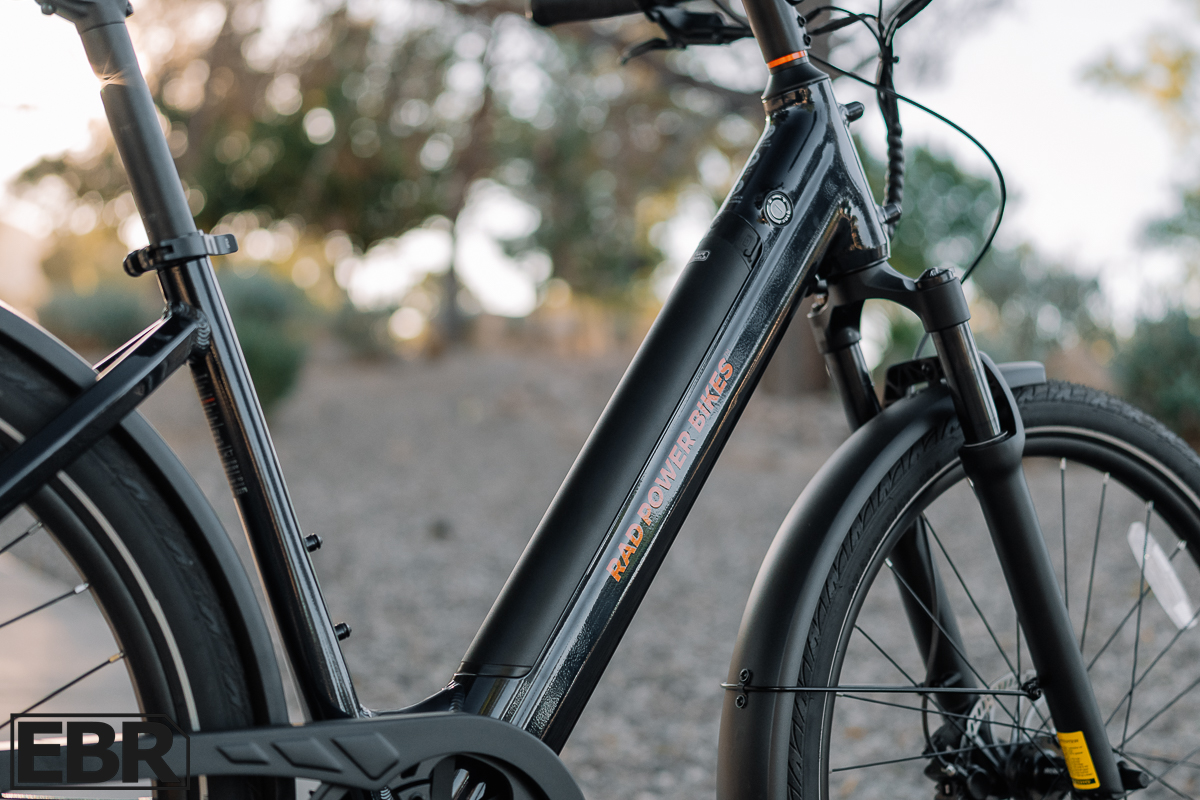
Rad Power estimates the RadKick’s range at up to 35 miles, which isn’t too wild an expectation for a commuter bike in this class. Of course, range depends heavily on how hard you push it, so I put it through the paces on a couple of settings to see what it actually delivers out in the real world.
First up was PAS 1 (the lowest pedal assist setting), where I managed to squeeze out 38 miles— a bit more than what Rad Power advertises. On PAS 1, it’s really about extending your mileage, so you’re just getting a light boost from the motor. It’s perfect for flat, easy-going rides or when you’re just looking to stretch that range to the max.
Then I took it up to PAS 5, where you’re basically asking for all the assistance the RadKick’s got. Here, I clocked in around 24 miles, which is a noticeable drop, but pretty typical when you’re maxing out the motor. This setting is great for riders who don’t want to hold back and need to get where they’re going quicker or handle a lot of hills. But just know that if you’re keeping it at full blast, you’ll be stopping to recharge sooner.
So, what does this mean for someone considering the RadKick? If you’re a commuter who plans to ride a mix of assist levels—some low for conserving battery and some higher when you need that extra push—you’re looking at a realistic range somewhere between 25 and 35 miles. It’s enough juice for most daily city commutes, grocery runs, or meetups around town, and you won’t have to stress about plugging it in until you’re back home for the night.
Power (Motor & Battery)
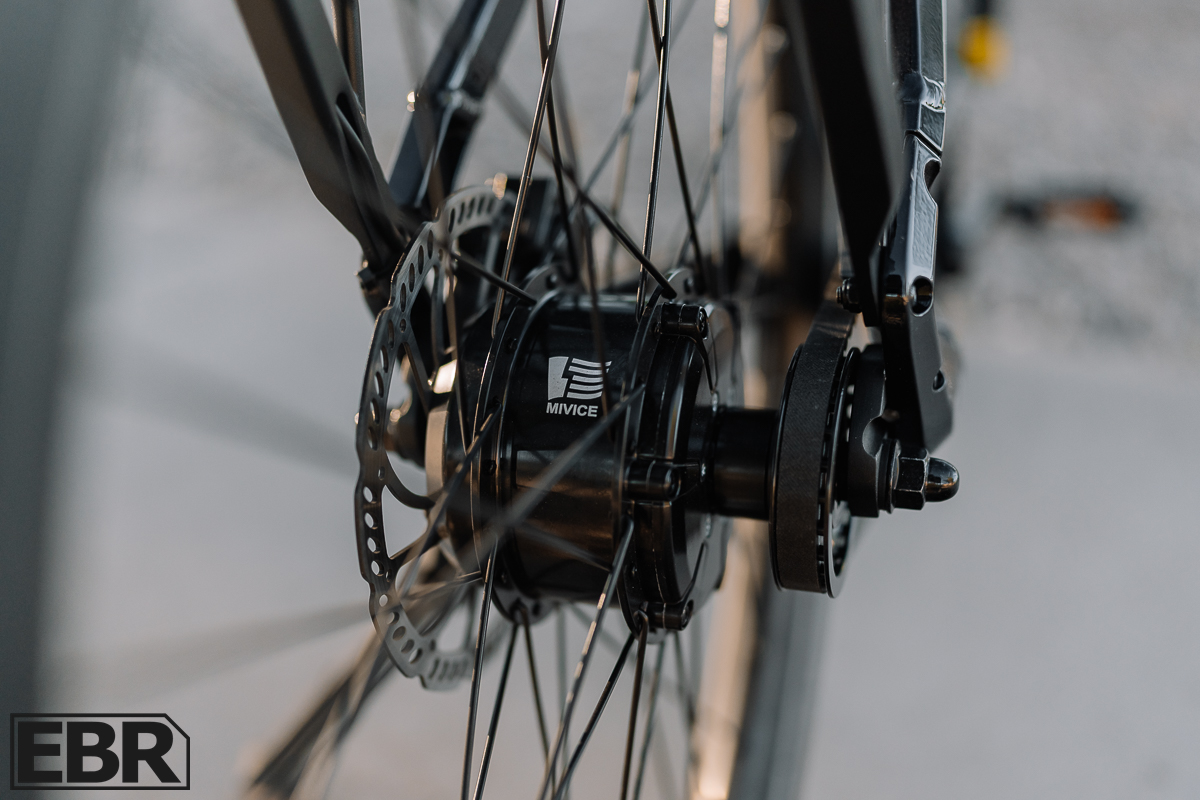
The RadKick packs a 500W rear hub motor with a torque sensor and five pedal-assist levels, making it a solid Class 2 setup. With 40Nm of torque, it’s not designed for high-performance speed but gives enough power to comfortably tackle city terrain, moderate hills, and keep a steady cruising pace without burning through the battery too quickly.
The battery itself is a 10Ah, 360Wh semi-integrated unit, weighing about 6 lbs, and meets UL 2271 safety standards. But even beyond that, Rad Power uses what they call ‘Safe Shield Technology’ where the individual battery cells are thermo-isolated to prevent a heat run-off should one cell get too hot.
You can expect reliable range for daily commutes or a day out around town, and the battery is backed by a 2-year warranty, which adds a bit of peace of mind. Altogether, the motor and battery are well-matched for a commuter e-bike like the RadKick, giving you practical power without going overboard—perfect for riders who want straightforward performance with just the right amount of boost when they need it.
Components
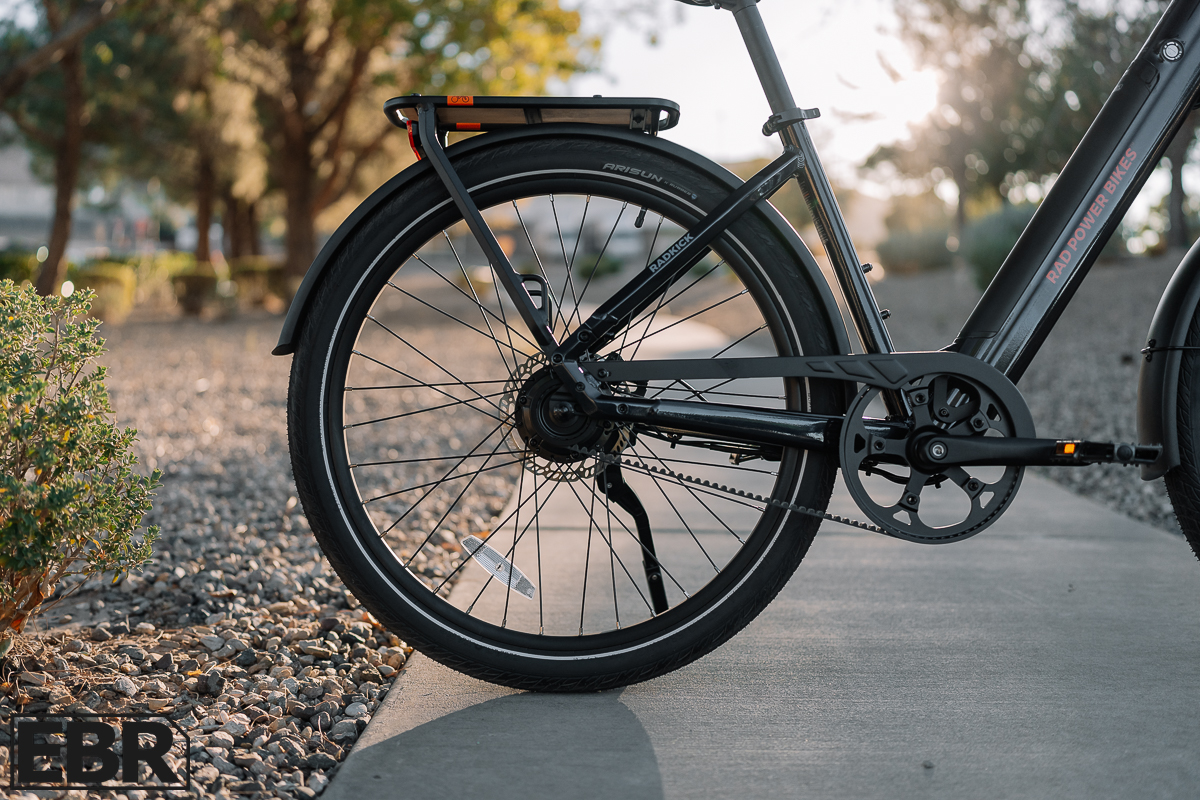
Right out of the gate, the RadKick is set up with a commuter’s essentials: full-coverage fenders, a sturdy rear rack with a 55 lb carrying capacity, and a reliable lighting setup. The lights include an auto-on feature, so you don’t have to remember to switch them on as it gets dark. Up front, you’ve got a 50-lumen LED headlight with a built-in reflector for visibility, while the rear boasts an integrated taillight with a brake light—solid for city riding when you need to be seen.
Moving into the core setup, the RadKick sports an 80mm EXSHO front suspension fork with 32mm stanchions and a bolt-on axle. This gives you just enough cushion for city streets without weighing the bike down, ideal for tackling potholes and curb drops without going full suspension overboard.
The drivetrain is a single-speed, belt-driven system featuring a 64T chainring and a 22T cassette, designed for simplicity and low maintenance. Belt drives like this are quiet, smooth, and clean—a real perk for commuters who’d rather skip the hassle of chain maintenance and gear adjustments.
For stopping power, the RadKick relies on hydraulic disc brakes, with 180mm Gemma GA-950 rotors that’ll keep you in control in all weather conditions. Reliable brakes are crucial for a commuter, especially in stop-and-go traffic or unpredictable situations, and Rad did well to include a hydraulic setup here.
The cockpit is straightforward and commuter-friendly, with a 90mm adjustable stem, 710mm aluminum handlebars, and lock-on ergonomic grips that reduce hand fatigue. The 350mm seatpost and lightly padded touring saddle add a bit of comfort for those longer rides, and the aluminum body pedals with steel spindles offer solid footing.
With the RadKick, Rad Power’s provided a smart mix of commuter features and durable components that are ready for the city grind. It’s not designed for hard trail riding, but for daily city commutes or local rides, it’s got everything you need—solid, low-maintenance, and practical through and through.
Screen / User Interface / App
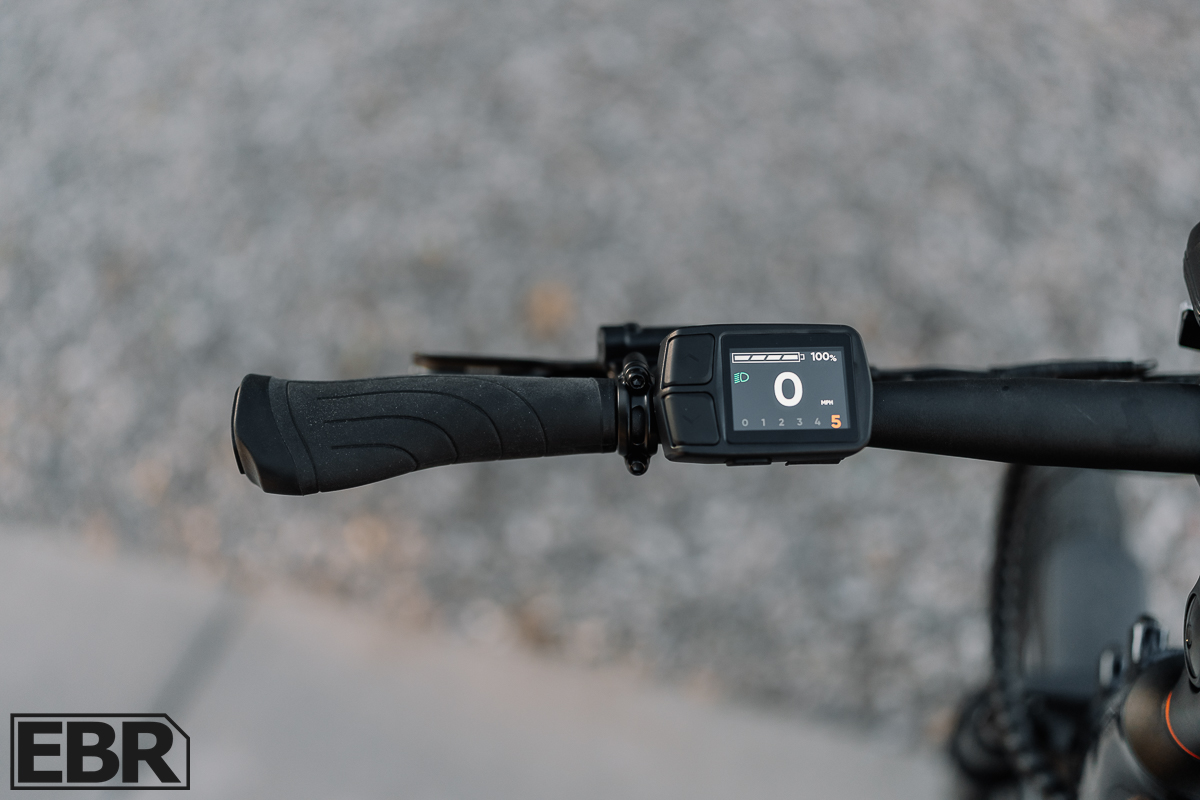
The RadKick’s LCD color display is straightforward and commuter-focused, showing speed, odometer, trip time, battery level, PAS level, and headlight/taillight status. It’s easy to read at a glance and keeps you dialed into the essentials without any fuss—ideal for quick city rides.
There’s no app integration here, but the display and the entire bike are IPX6 rated, meaning it can handle heavy rain without a problem. For a practical commuter, Rad Power keeps it simple and lets the bike handle the rest.
Rad Power Bikes Radkick Model Options
The RadKick keeps things simple with a one-size frame designed to fit riders between 5’2″ and 6’1″, which should cover most commuters. The geometry leans towards an upright position, making it comfortable for city riding without putting too much strain on your back or wrists—perfect for longer commutes or casual rides around town.
In terms of color, you’ve got a single option: Midnight Blue. It’s a sleek, understated shade that works for both daily rides and the occasional night out. The frame also includes four attachment points—a seat tube mount, two fender mounts, and mounting points for both front and rear racks—giving you some flexibility if you want to outfit it with extra gear.
Rad Power offers a few accessories compatible with the RadKick, like rack bags, panniers, and cargo crates, so you’ve got options if you plan to haul more than just yourself. Overall, Rad’s approach to the model is about keeping it practical and accessible, making it a straightforward choice for anyone who needs a reliable commuter without diving into a lot of customizations.
Is The Rad Power Bikes Radkick Worth Buying?
So, is the RadKick the right commuter e-bike for you? If you’re after a straightforward, no-fuss ride that handles city streets and the daily grind without a lot of maintenance, this bike nails it. Rad Power Bikes designed the RadKick with a blend of simplicity and utility, perfect for riders who want to get from A to B efficiently without dealing with a heavy, overbuilt machine.
The bike offers two versions—a classic 7-speed model for riders who want the flexibility of gears, and a belt-drive single-speed for those who prefer the low-maintenance life. Each option brings a solid commuter experience, with enough power to keep you cruising comfortably without turning heads (or your budget) toward high-end specs you may not need.
Of course, there are areas for improvement. The range, while solid, isn’t groundbreaking; it’s built for short to medium commutes rather than long-haul adventures. And while the lack of app integration might feel like a miss for some, it keeps things simple, which aligns with the RadKick’s purpose.
Ultimately, this is a commuter for people who value ease of use, practical design, and just the right amount of power. If that sounds like what you’re looking for, the RadKick is a reliable, well-priced choice that fits the bill without a lot of extras.
Pros
- The motor and pedal assist are super smooth, giving you a steady boost without any jerky starts—a nice touch for city riding.
- It’s got all the commuter essentials covered: lights, full fenders, and a solid rear rack, so you’re set up for daily rides right out of the box.
- There’s also a budget-friendly 7-speed chain drive option, which is great if you want some gear choices, especially for hills, without breaking the bank.
- UL 2849 and 2271 certified, so you’re getting safety that’s solidly backed, not just a sales pitch.
- The adjustable stem gives some room to tweak the fit, which can make a big difference in comfort for longer rides.
- With a low 17” step-through height, it’s easy to hop on and off—a nice feature if you’re making frequent stops or loading up on cargo.
Cons
- The range is on the shorter side, so it’s best for shorter commutes or errands rather than long-haul days.
- Only one color and size option: the belt drive comes in midnight blue, and the chain drive in arctic blue—fine if you’re not picky, but limited if you want more variety.

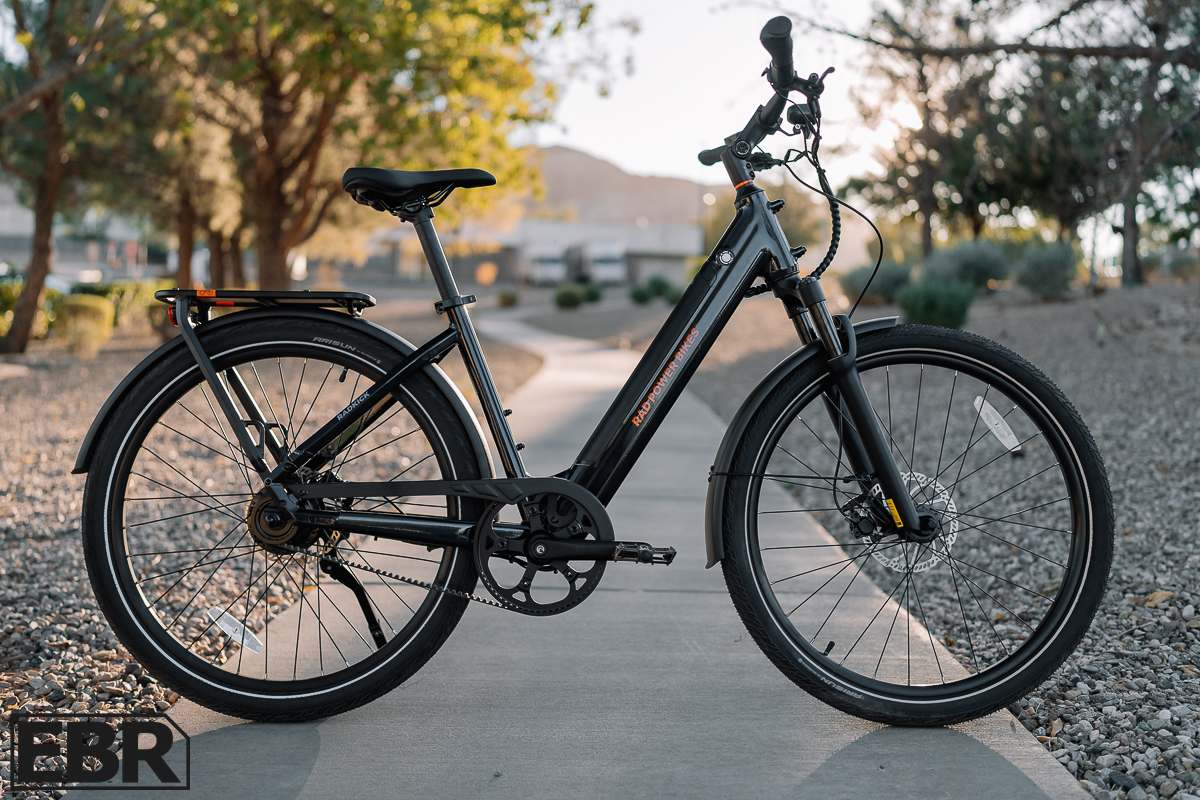
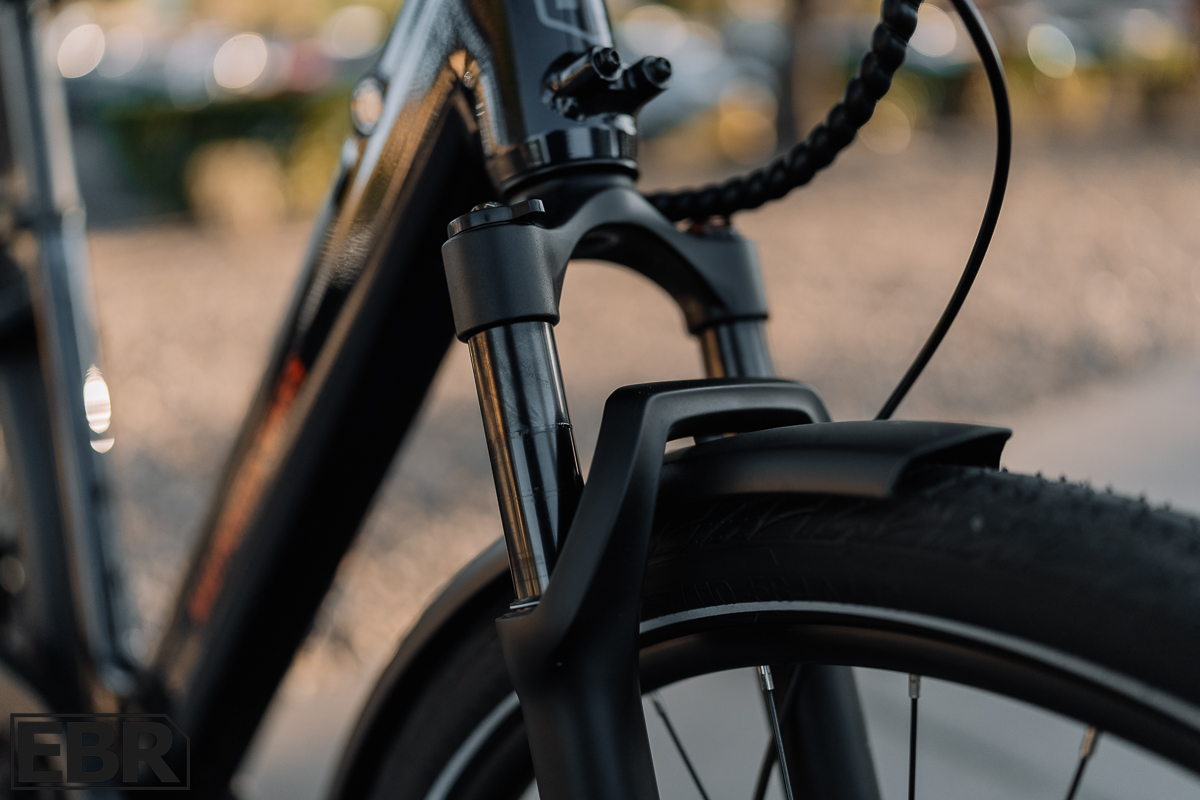
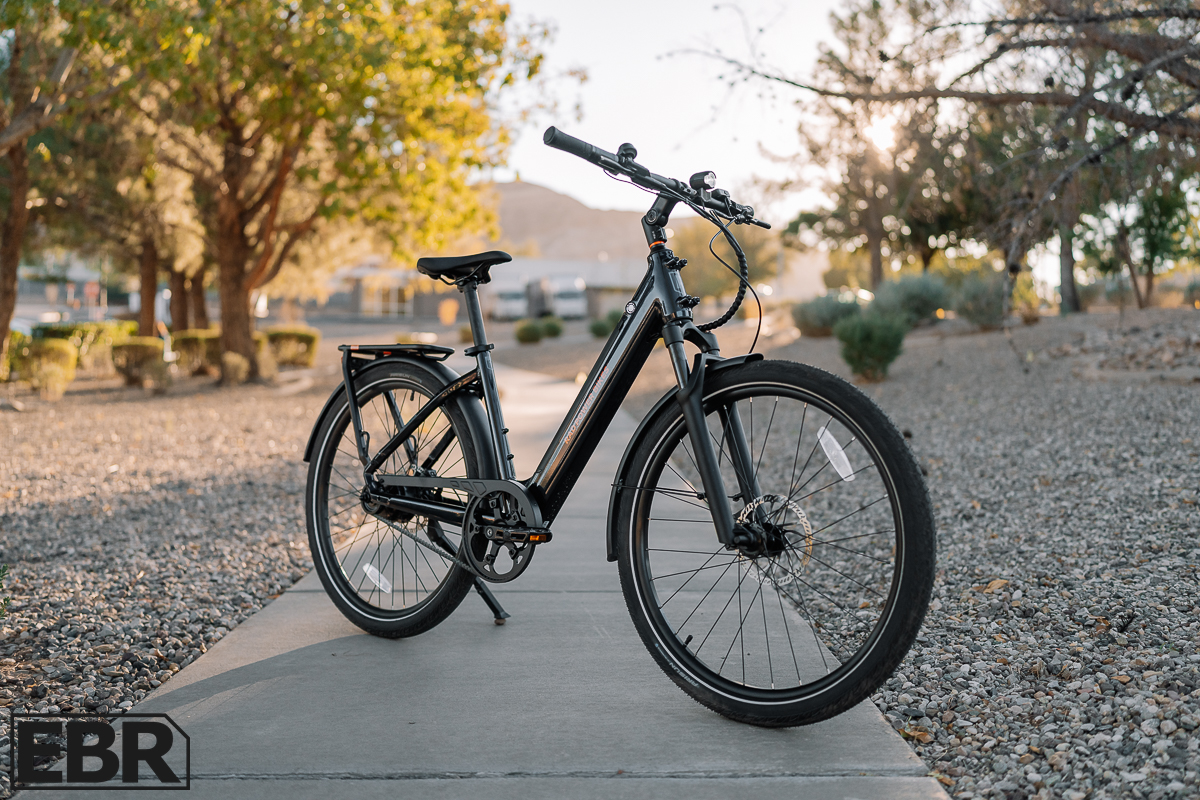
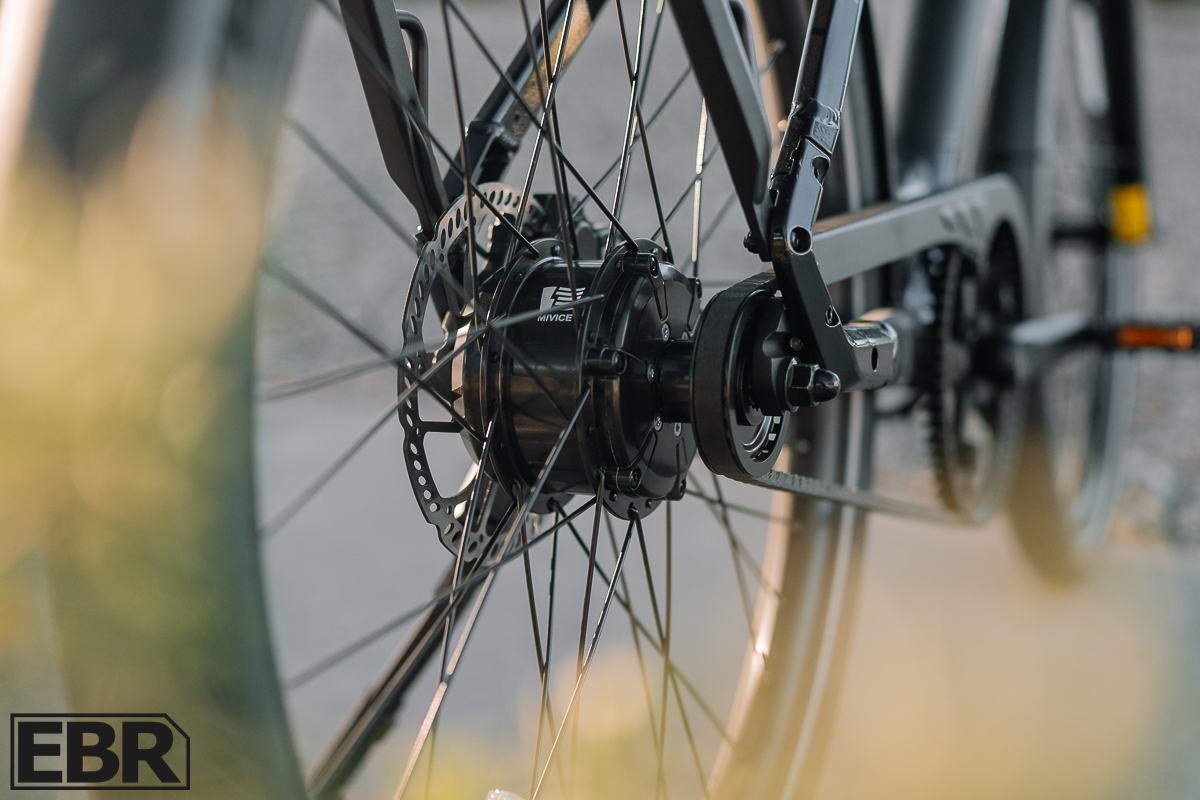
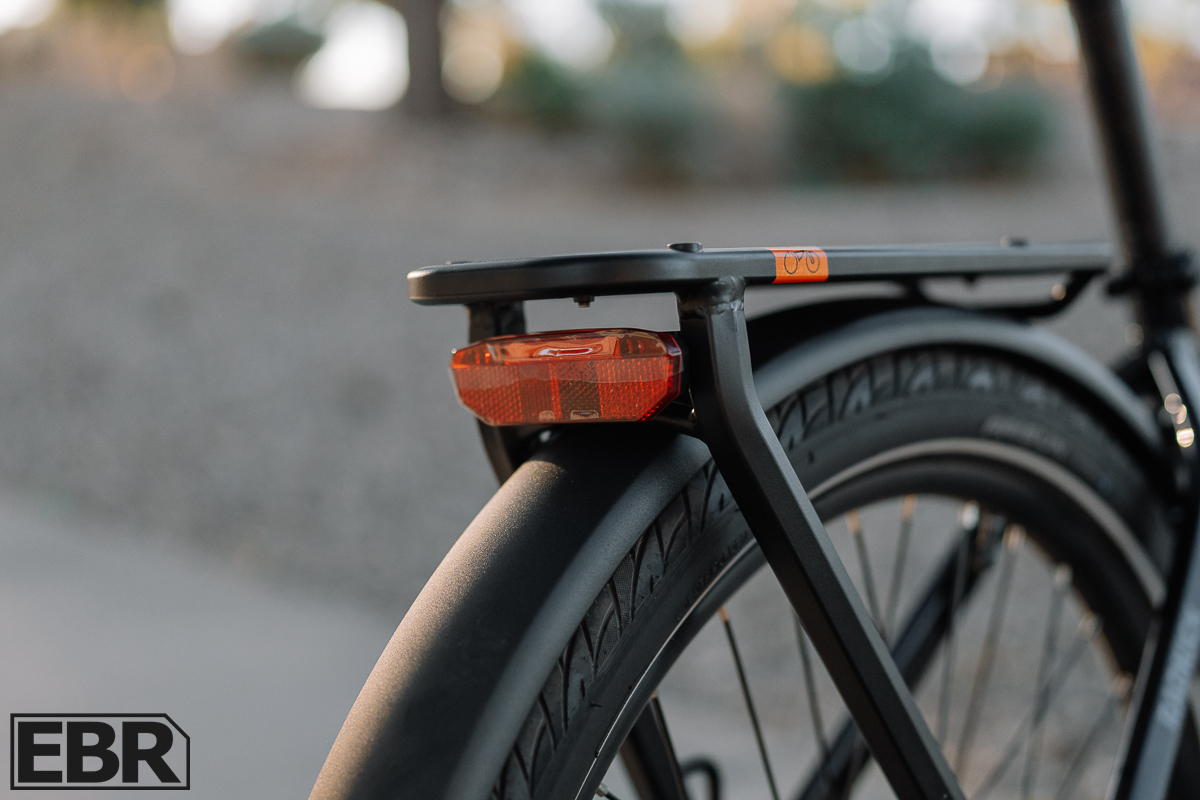
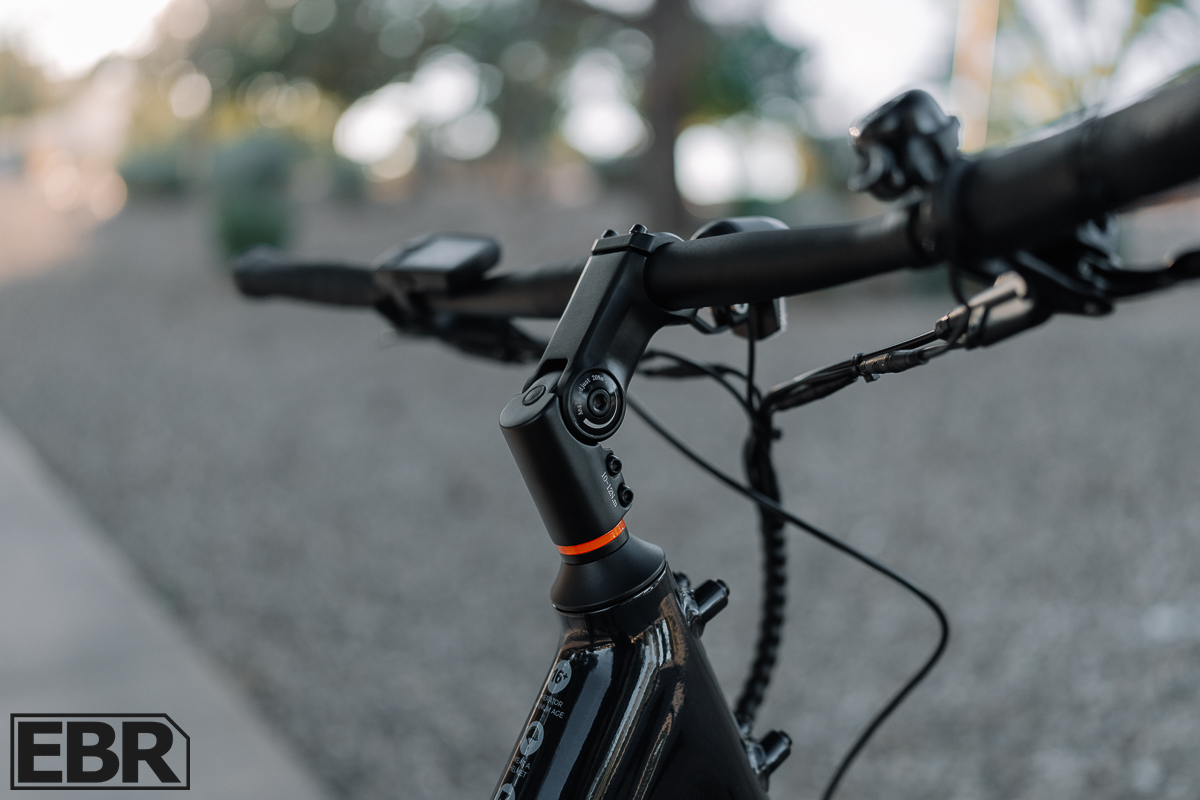
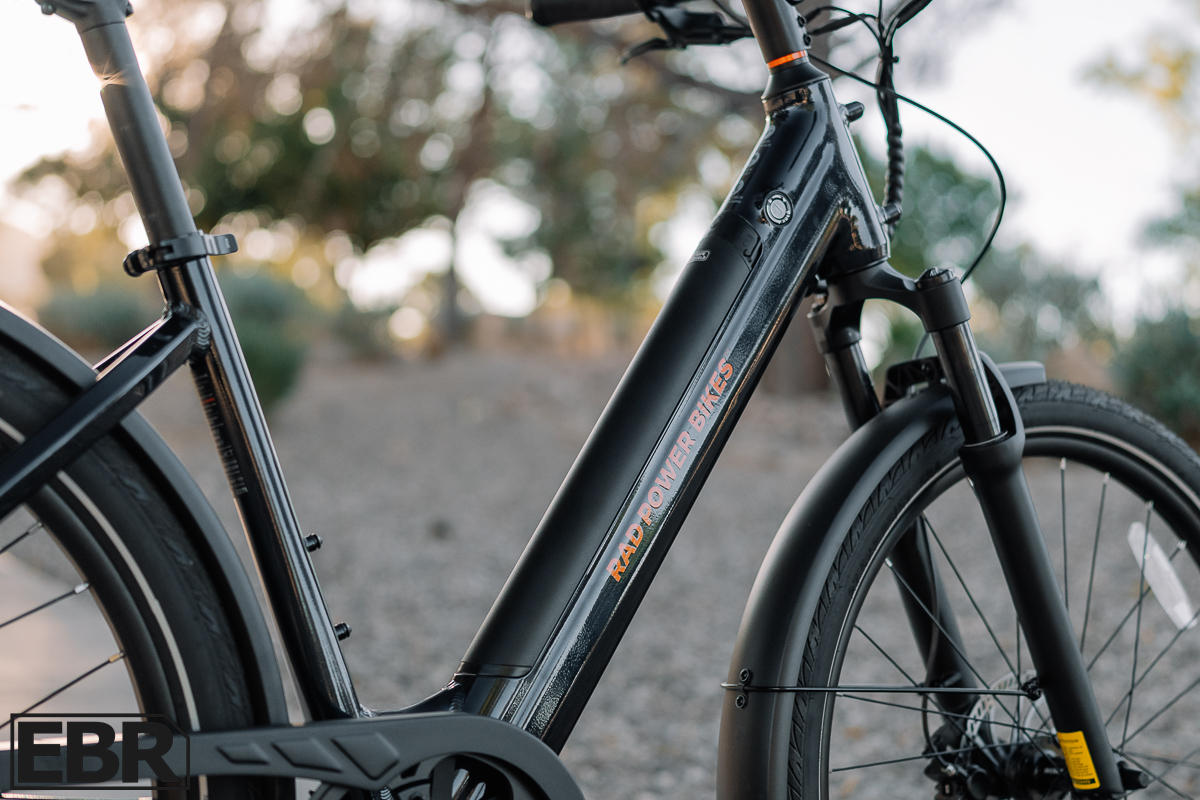
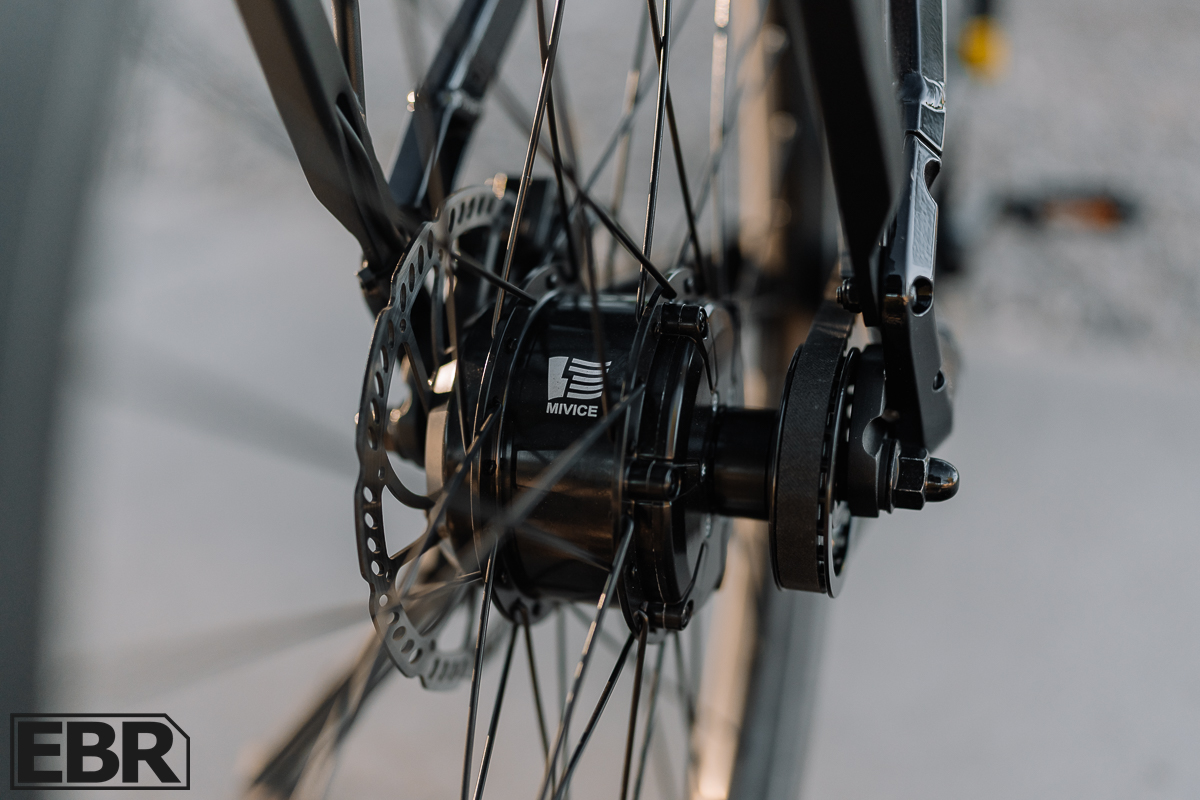
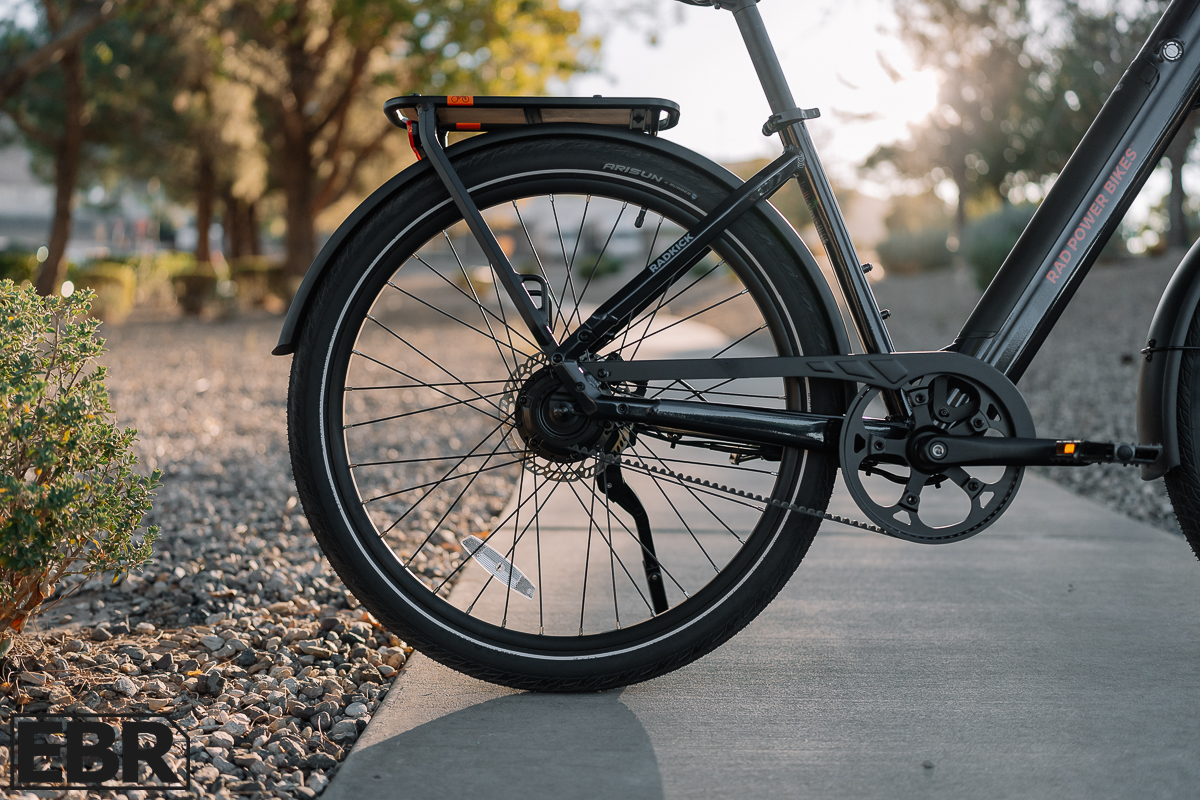
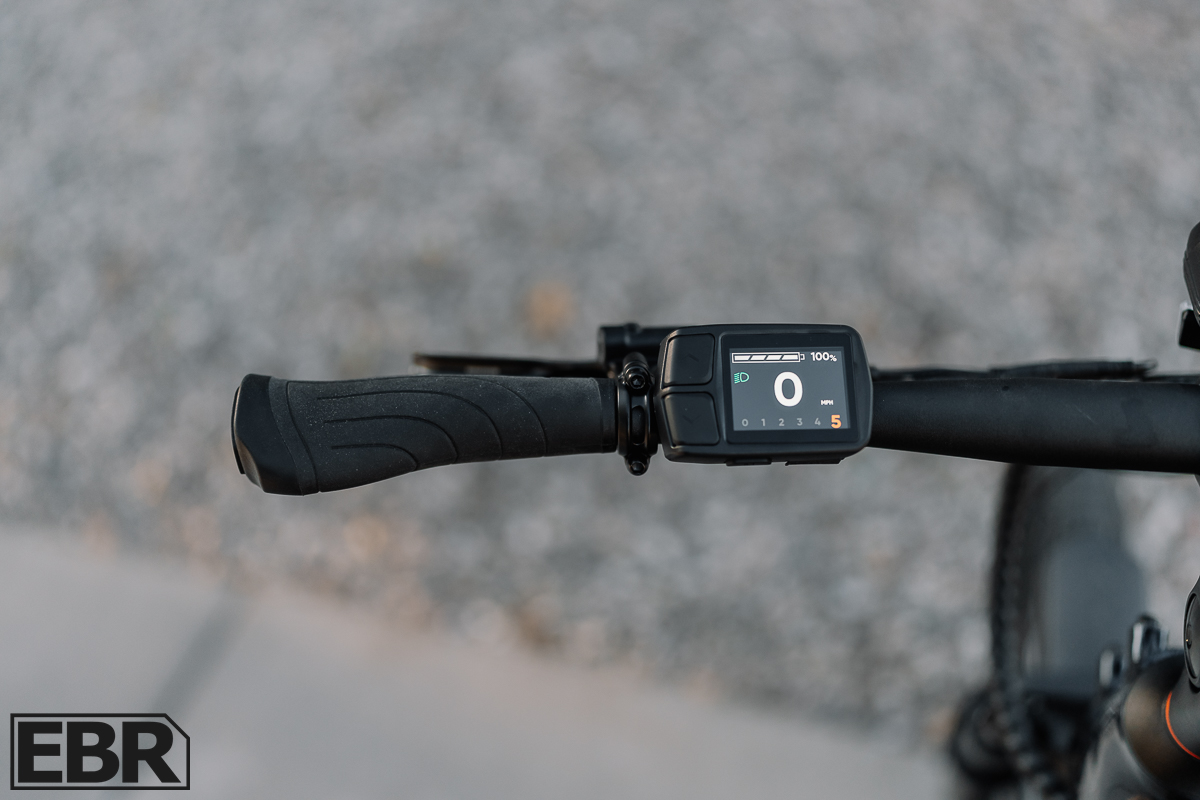

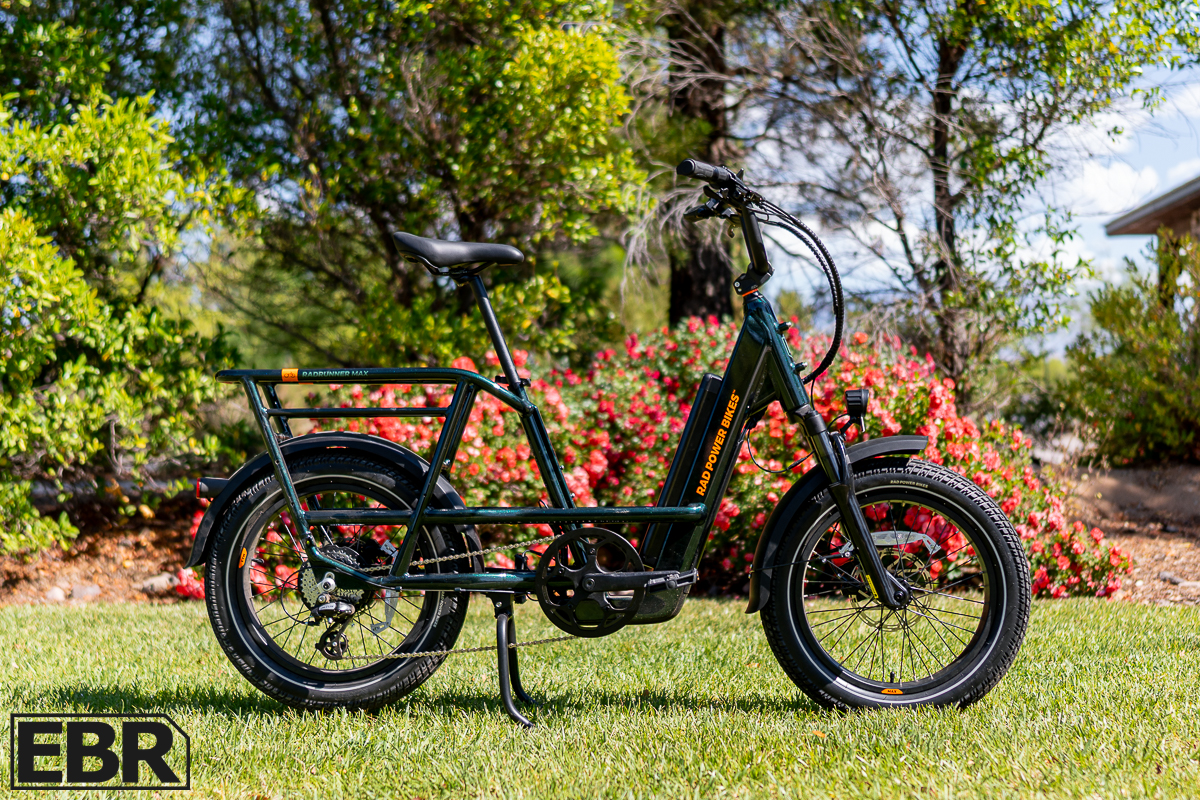
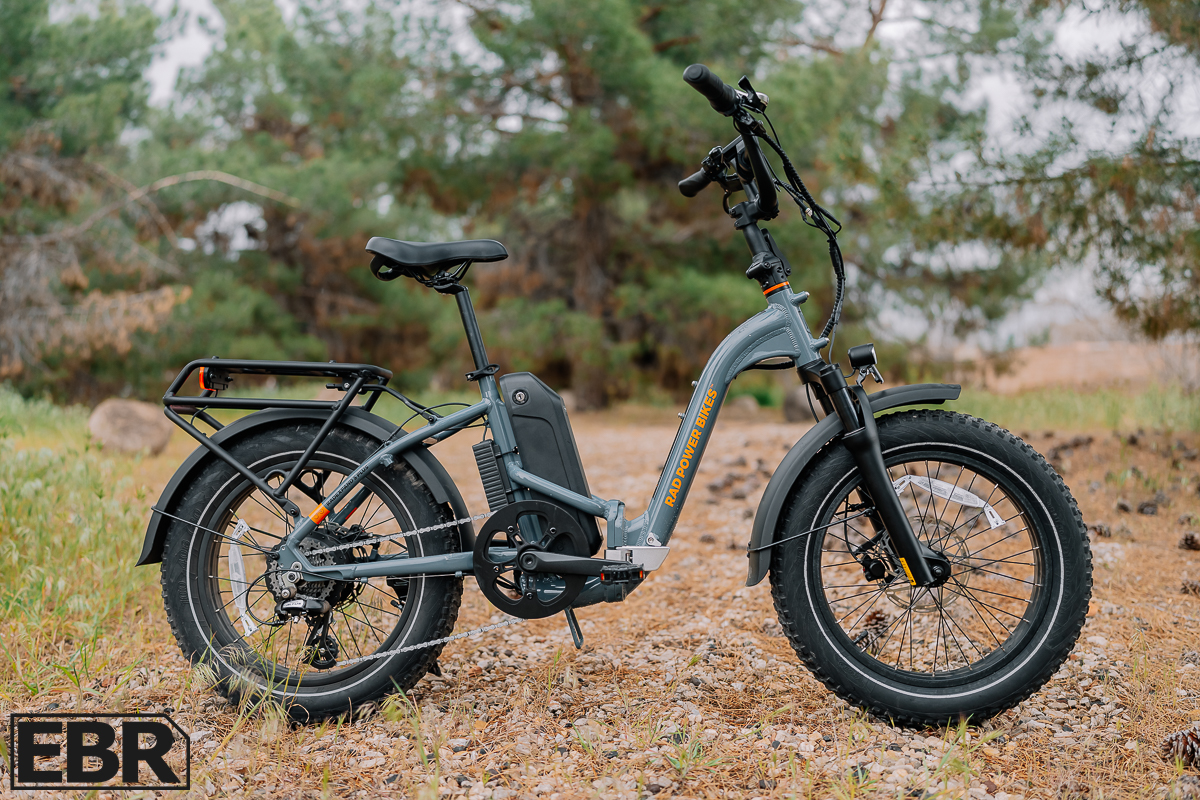
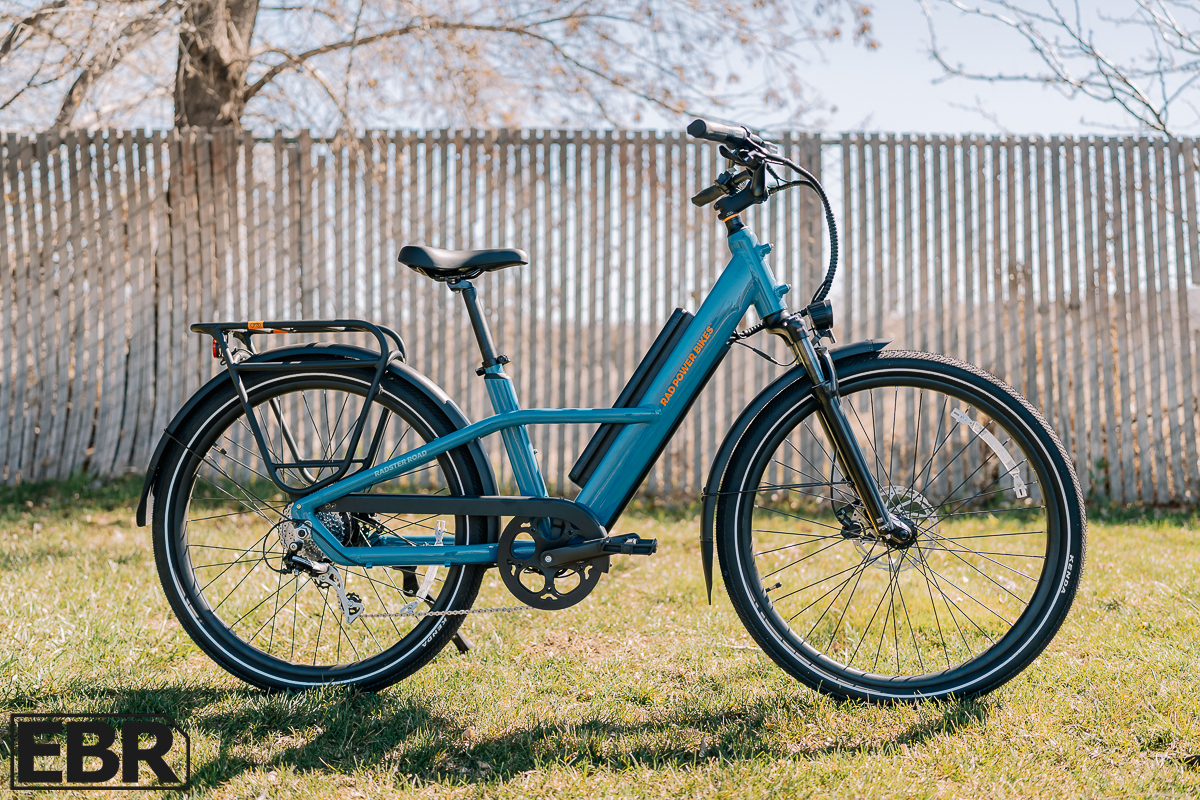
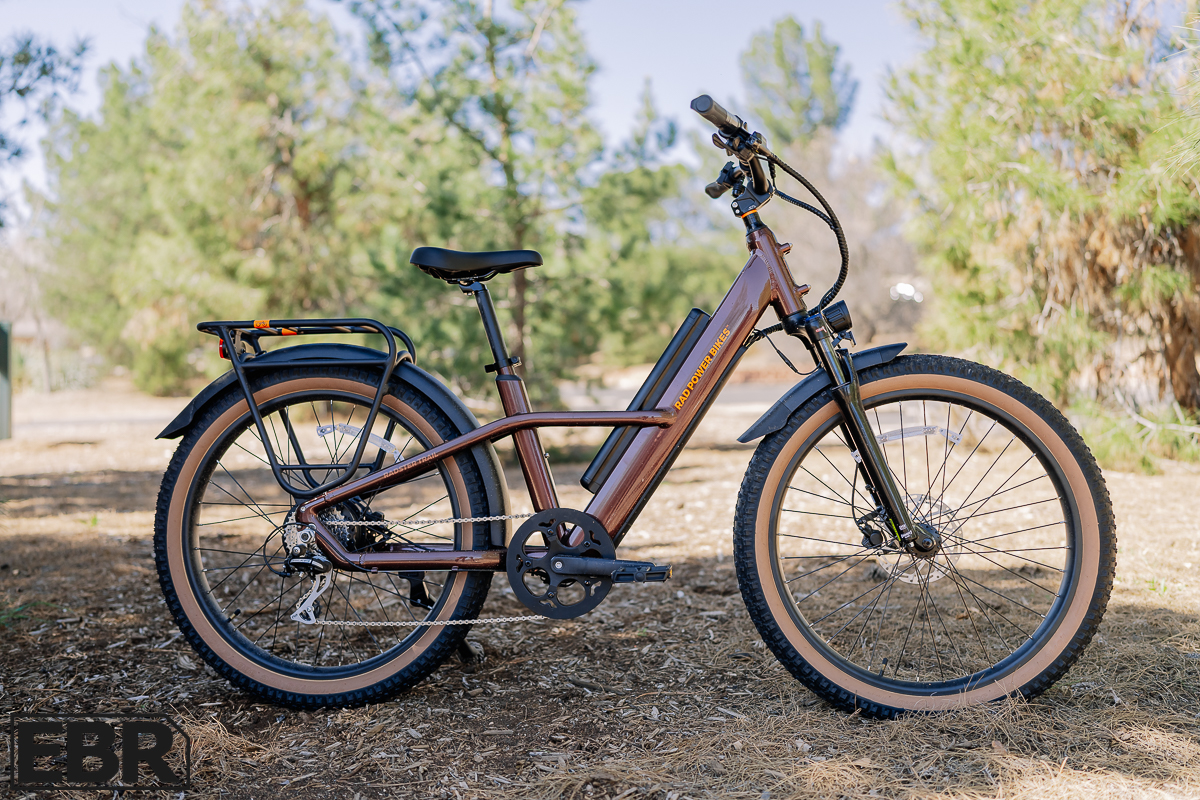
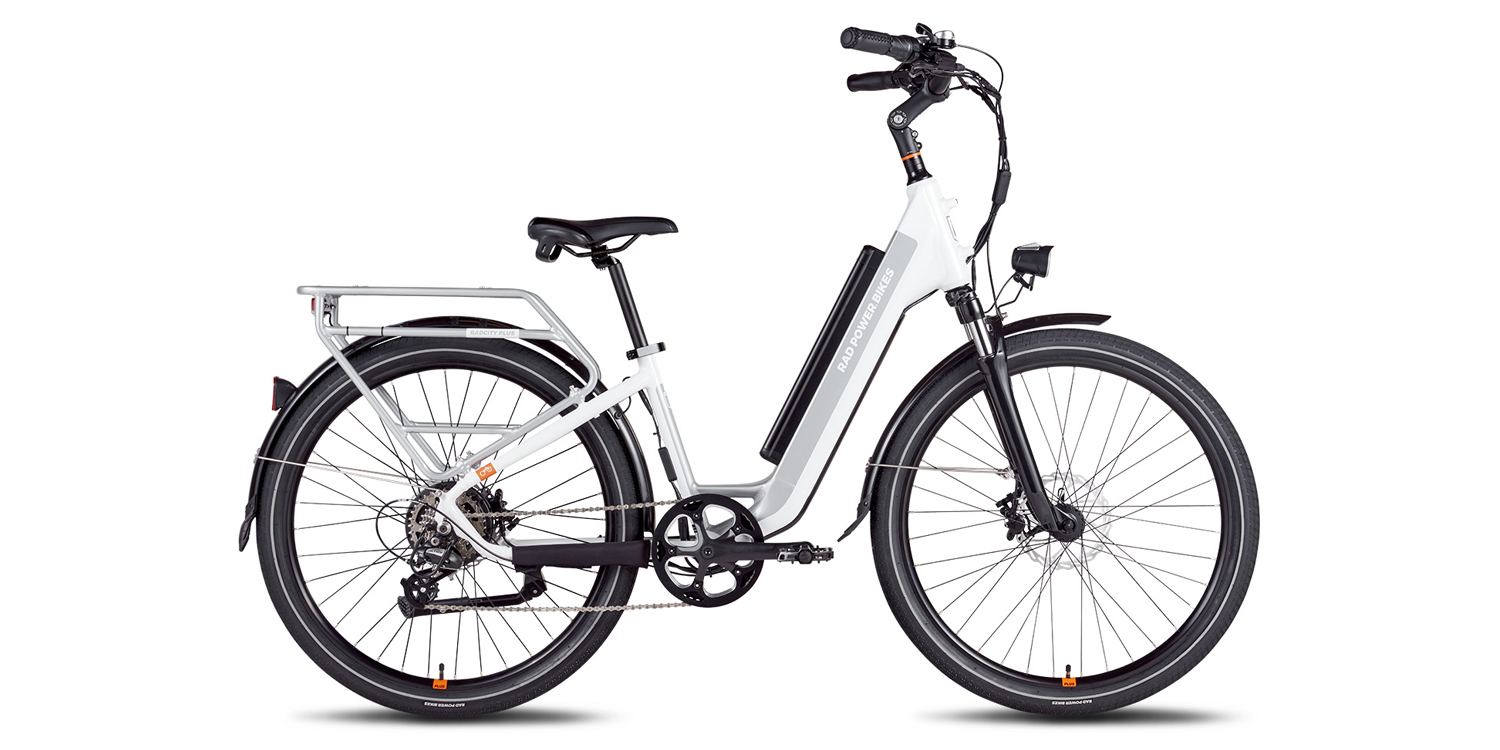
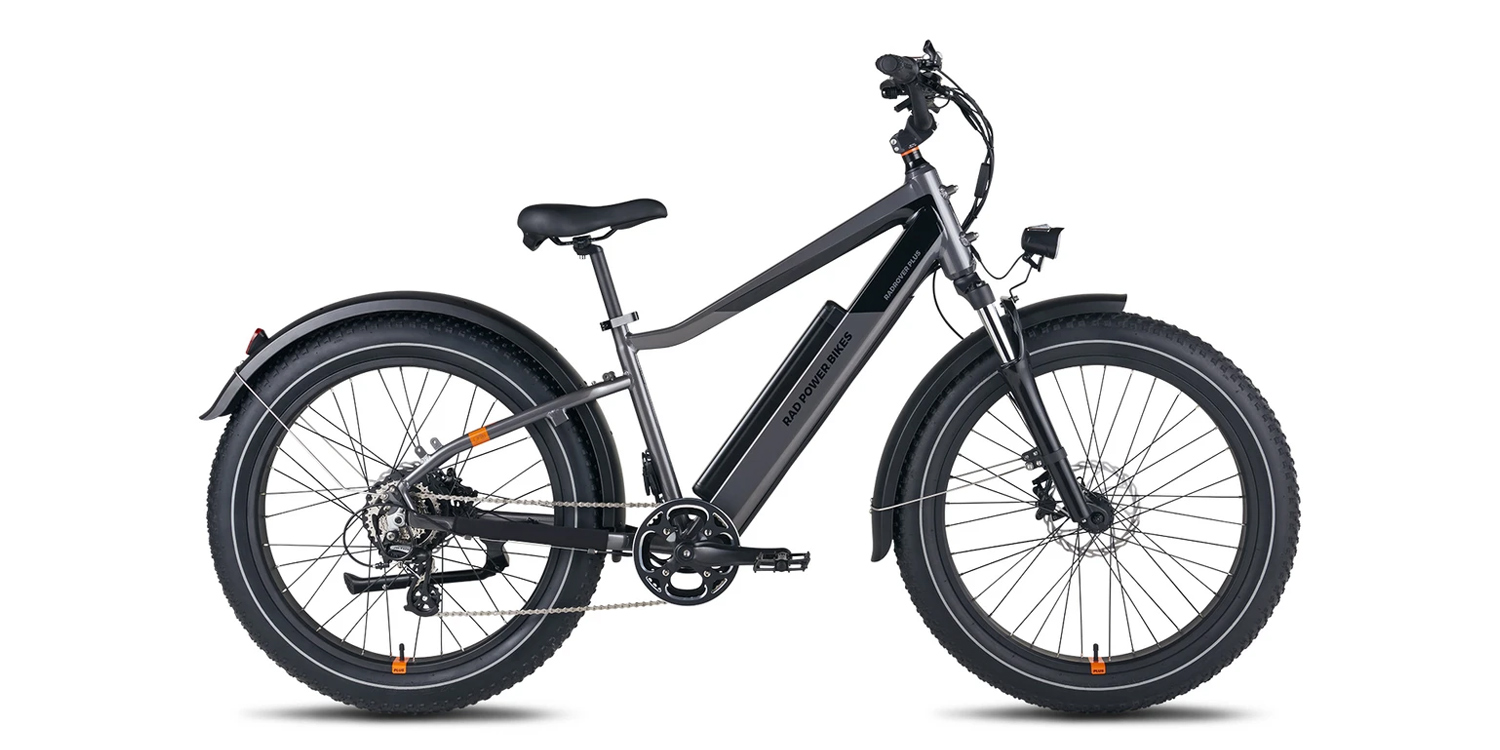
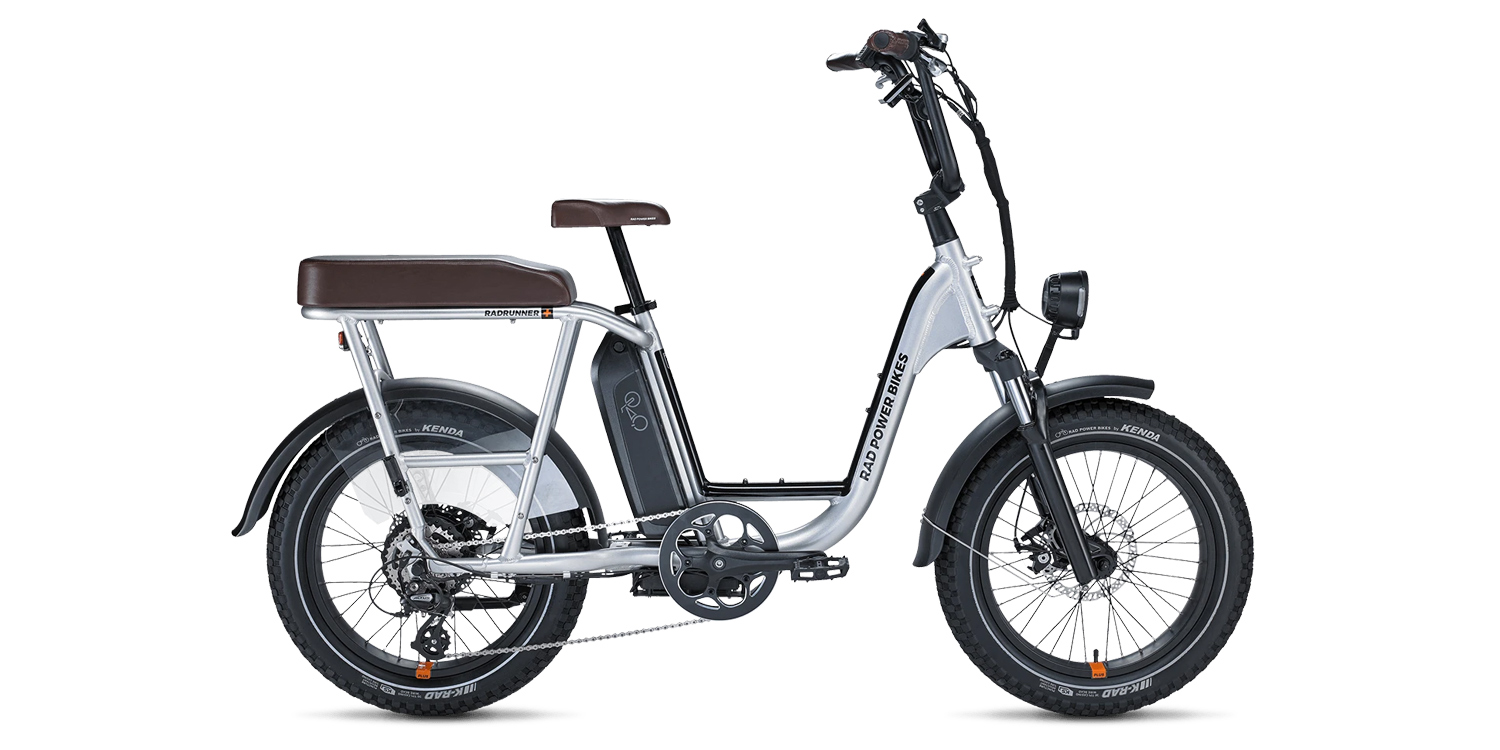
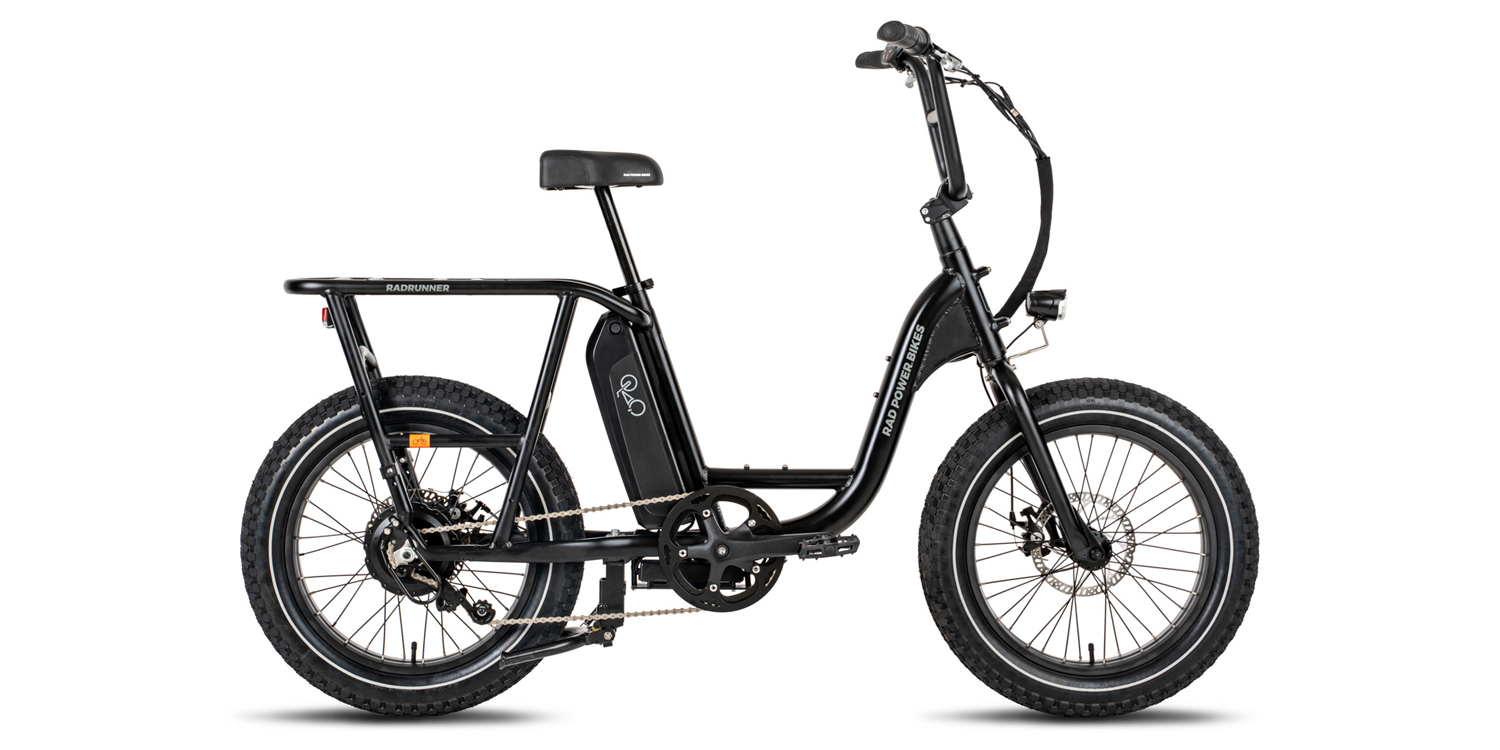
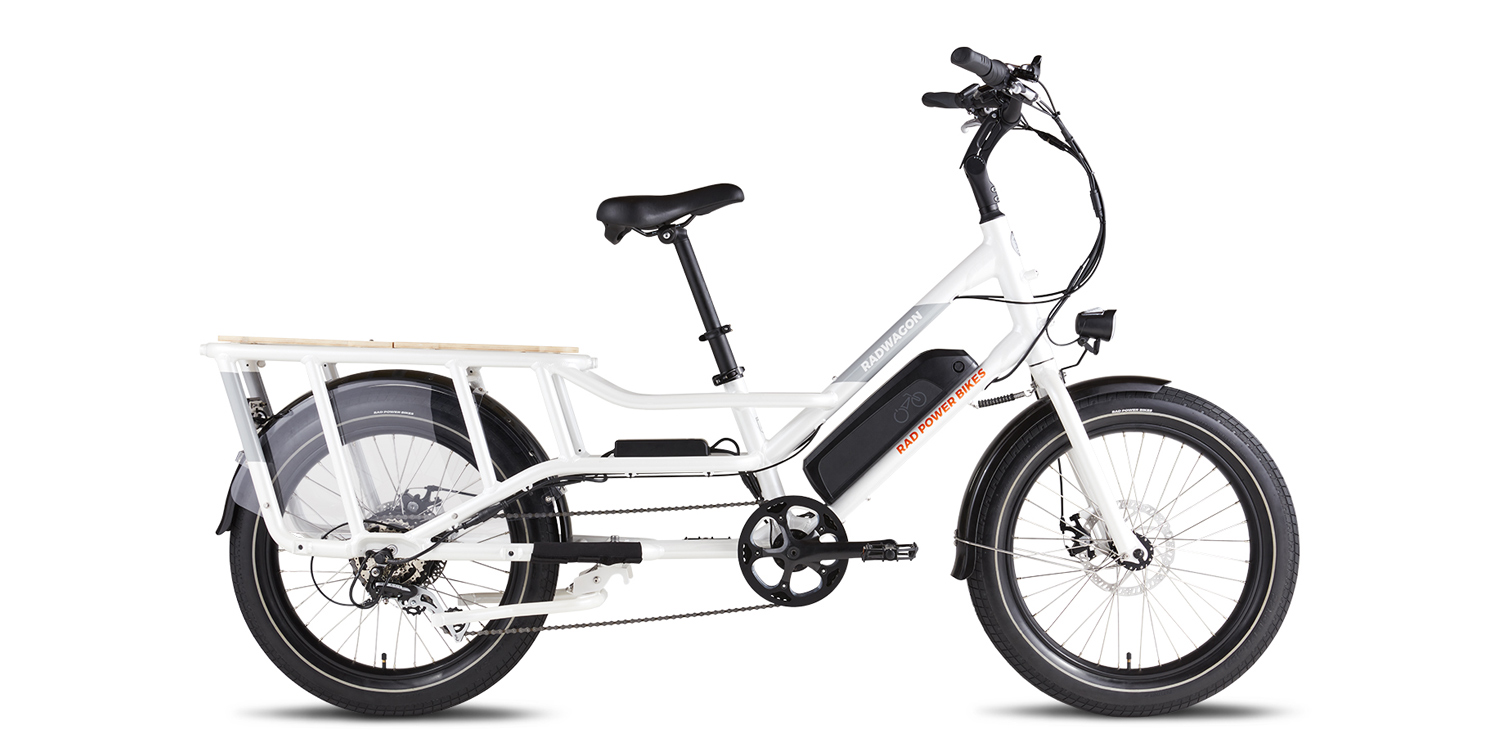
Reader Interactions